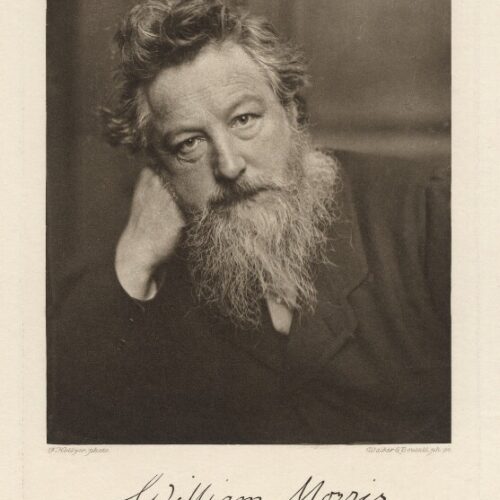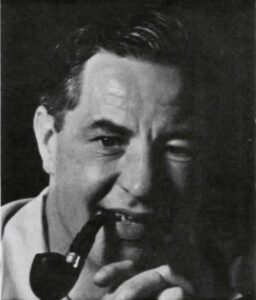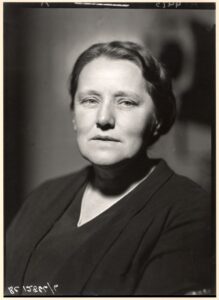

Fellowship is heaven, and lack of fellowship is hell.
William Morris, A Dream of John Ball (1888)
Painter, textile designer, artist, writer, and socialist William Morris is renowned throughout English arts and left-wing political groups. His love for medieval art and design painted a dramatic contrast to the industrial Victorian world he lived in, which he saw as full of greed and exploitation of the poor. Although born into an evangelical family, Morris lost his faith at a young age and pursued his love for the creative arts. Although not a politician he became a firm believer in socialism and the class struggle between the rich and poor, forming the Socialist League in 1885.
I do not want art for a few, any more than education for a few, or freedom for a few.
William Morris, lecture to the Trades’ Guild of Learning, 4 December 1877
William Morris was born on 24 March 1834 in Walthamstow, Essex, to a wealthy Anglican middle-class family. Due to his family’s wealth, he received an education at Marlborough College from the age of 13 in 1847. Despite not enjoying his time at Marlborough, Morris began to gain an interest in Romantic art. After leaving Marlborough in 1853, he studied Theology at Exeter College at the University of Oxford. It was during his time at Oxford that Morris’ enthusiasm for the creative arts flourished, especially architecture. Morris also started to become more aware of the class divisions within industrial England from reading the works of contemporary writers John Ruskin, Charles Kingsley, and Thomas Carlyle. Despite his early convictions of the inequality within England, Morris nearly became a clergyman and was heavily affected by the Oxford movement (the renewal of Catholic practices within the Church of England). However, the heavy influence of John Ruskin and the morality of architecture started to turn him away from the church, and instead he began a career in the arts.
William’s career as a full time architect was short-lived, as when he was travelling through Northern France he was persuaded by poet and painter Dante Gabriel Rossetti to give up architecture and take up painting instead. From here William would experiment with various dyes and develop his admiration for medieval art and architecture, founding the Society for the Protection of Ancient Buildings in 1877. Morris sought to combat the increasing industrialisation of towns and old buildings that was occurring, striving to preserve and promote the creative and imaginative ways of the past against the black and mechanical world he lived in.
This approach to art was further implemented in his political thinking. Losing his faith completely after his time at Oxford, Morris became further intertwined with Marxist and socialist groups, becoming a committed revolutionary socialist activist. He joined the Democratic Federation (later the Social Democratic Federation) in 1884 and would travel to industrial areas of England, promoting the ideas of socialism while being hounded by the authorities. He participated in the march that led to Bloody Sunday on 13 November 1887 (when protesters clashed with police and army forces), and later formed the Socialist League. While part of the League, Morris published two of his most important romances: A Dream of John Ball (1887) and News from Nowhere (1890). The two pieces promoted an idealistic vision of a socialist rural utopia. In Morris’ final years he continued with his political writing and founded the Kelmscott Press in 1891. Although short-lived, the Kelmscott Press published Morris’ work and embodied his ideal standard of what artwork should be like.
William Morris died from tuberculosis on 3 October 1896 in Hammersmith. He was 62 years old.
The reward of labour is life.
William Morris, News from Nowhere (1891)
William Morris’ influence is extremely broad, spanning the creative arts and political theory. His impact on Victorian style and fashion was significant, as he turned away from the mechanical style that enveloped the country and focused on romanticisms, myths and the old ways of life. He wanted to use his art to help rebuild society by focusing on the principles of simplicity and honesty. This was applied to his political writings too, as he sought to challenge the injustices faced by the everyday worker.
Morris’ loss of faith further drove his passion for socialism and equality. He described puritanism as one of ‘the things which I hate most in life’ due to the cold austerity which radical puritans would preach. Morris wanted to influence a simpler, more compassionate society, which could turn away from greed and exploitation, believing that art could one day replace religion as a source of guidance.

Belfast-born Jack McDowell was an activist, educator, politician, and atheist, whose humanism was evident in a lifetime of work for […]

I have a strong faith and I love mankind. I do not believe in God but I believe in good. […]

There is nothing to fear from Gods, nothing awaiting us in death; good can be obtained, evil fortune can be […]

It lies within our power, if we so desire it, to make the familiar world we inhabit more worthy of […]